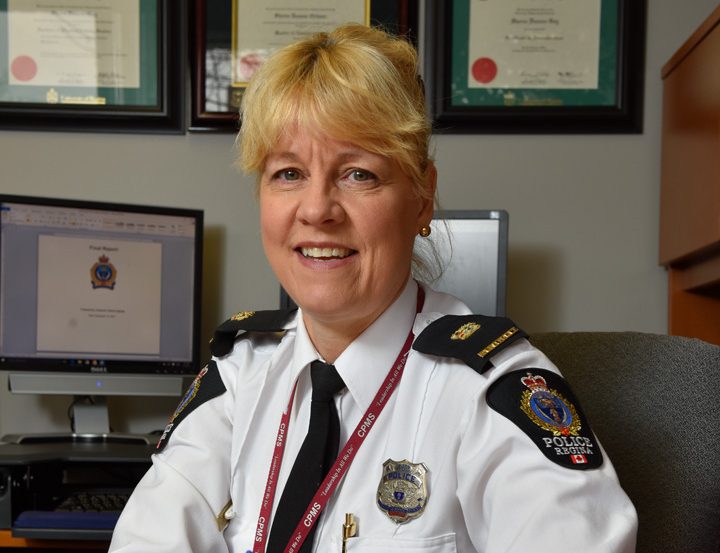
Sheree Ortman BPAS’95, CA’97, MAdmin’15 had forgotten about her application to join the Regina Police Service (RPS) when the call came asking her if she was still interested. Layne Jackson had wanted to be a firefighter since he was a young teenager. They both knew early on that they wanted to be in jobs where they could serve others; the kind of jobs where each day brought new and different challenges.
Both attended the University of Regina to advance their education and move forward in their chosen professions. Both relied on the flexibility of part-time studies to help them balance their work and family responsibilities with their education. And both achieved their goals: Ortman served with the RPS for 25 years before retiring in early September, while Jackson has served as chief of Regina Fire and Protective Services for the past year and a half, following eight years as deputy chief.
“If you have the motivation to improve yourself and take on new work experiences,” Ortman explains, “you don’t want to be stalled by factors outside your control.”
Today, people in their lines of work are referred to as “first responders,” a catch-all phrase referring to individuals with specialized training who are among the first to arrive and provide assistance at the scene of an emergency, such as an accident, an explosion or fire, a natural disaster or a mass shooting. Informally, they are the brave folks who are trained to rush toward trouble while the rest of us run the other way.
Ortman, who admits to being “something of an adrenaline junkie,” experienced several twists and turns along her path to becoming a police officer. However, throughout that journey wound the common thread that her work would involve helping people, and it would offer a variety of experiences. After finishing high school in Yorkton, Saskatchewan, Ortman trained to be an emergency medical technician at SIAST (now Saskatchewan Polytechnic). But after about five years, she recognized that if she wanted to better her pay and benefits and have more opportunities for education, she needed to change careers.
“If you have the motivation to improve yourself and take on new work experiences,” Ortman explains, “you don’t want to be stalled by factors outside your control.” She applied to the Regina Police Service because policing had some of the same characteristics as being an EMT; every day was different. But when she applied to the RPS – the only police service she ever applied to – there was a hiring freeze.
“My family has always been athletic, so I applied to take a physical activity studies degree at the University of Regina,” says Ortman. “I was in my second-last semester when the police service called. At first, I wondered if something was wrong. When they asked if I was still interested in the job, I was surprised but I wasn’t too sure. I told myself, ‘Don’t shut the door too quick. There are about 20 steps to get the job, and I may not make it, or they may say I’m out at any point.’ ”
Those steps included numerous physical, medical and psychological tests – which she passed – before beginning her training at the Saskatchewan Police College at the University of Regina campus. Ortman also continued her studies and completed her degree.
A southern Saskatchewan native, Layne Jackson BHRD’09 (Hons) originally worked for a year after high school and then pursued his interest in firefighting. He attended Lake Superior College in Duluth, Minnesota from 1993 to 1995, where he received an associate degree in Fire Technology and Administration. He then returned to Saskatchewan, working for more than 10 years in the Office of the Fire Commissioner, which is tasked with investigating and responding to large-scale emergencies and disasters. He began taking night classes toward a Bachelor of Human Resource Development at the University in 1998 and graduated in the spring of 2009.
“It was difficult juggling classes, family and work, but the experience turned out positive,” Jackson says. “I met so many professionals who were upgrading and diversifying their education. There were also elective classes that gave me a good cross-section of subject matter, and also exposed me to young, eager students fresh out of high school and to new Canadians who introduced me to aspects of different cultures.”
Equally important, Jackson’s education was directly applicable to his responsibility for heading an organization of 325 people, what he describes as “… the art and science of leading and developing people.” Several classes in finance and economics also help him in his role as chief, he adds.

“I’m glad I waited to do my master’s because the life experiences I’d had gave me more insights that I could apply in my studies and at work.”
When Ortman joined the RPS, four per cent of the service’s sworn officers were women. The 13 female officers were a novelty, she says, and while the RPS has always been accepting and welcoming, she sometimes experienced what she calls “micro-inequities,” such as having a colleague speak to her with his back turned or blocked her from the rest of a group. “You were always trying to prove yourself, and you didn’t want to mess up and prove what you felt your fellow officers and members of the public were already thinking.” Ortman emphasizes that the RPS has made a lot of progress on diversity, with about 23 per cent of sworn officers being female.
Ortman recognized that if she was going to continue taking on more responsible roles in the RPS, where the service’s strategies and budgets are planned and executed, she needed more than her undergraduate degree. “I don’t like to plateau; when I get to that point, I’m itching to grow. I also recognized that it would benefit me and those I worked with.”
Ortman began studying for a master’s degree in administration at the Levene Graduate School of Business in 2012, with a focus on courses in leadership. “Leadership was key to what I was going to do for the rest of my career,” she explains. “I’m glad I waited to do my master’s because the life experiences I’d had gave me more insights that I could apply in my studies and at work.” Ortman received her master’s degree in 2015.
Jackson’s and Ortman’s experiences and interests also mesh with research underway at the University of Regina, on the effects of occupational stress injuries on first responders. In the past few decades, public awareness of the psychological, emotional and physical effects that attending to emergency situations have on first responders has increased. It’s often referenced under the blanket terms post-traumatic stress disorder (PTSD) or post-traumatic stress injury.
“Firefighters are very safety conscious, but I’m also mindful of the mental stresses they encounter over a career. I’m looking forward to seeing the results of the work of the national institute, and how it might help mitigate the risk of occupational stress injuries in what is a very dangerous job.”
In March 2018, the University of Regina’s Canadian Institute for Public Safety Research and Treatment (CIPSRT) was assigned to lead a Canada-wide consortium of university researchers, partner organizations and stakeholders in developing tools to recognize mental injuries suffered by first responders and other public safety personnel. The two-pronged initiative focused on prevention measures and treatments that reduce the impact of occupational stress injuries.
Funding for the project includes $20 million to support a five-year project in partnership with the Canadian Institutes of Health Research to investigate the incidence of post-traumatic stress injuries, and $10 million over five years for work with Public Safety Canada to develop an internet-based cognitive behavioural therapy pilot project to increase access to care and treatment for first responders and other public safety personnel across Canada, paticularly those in rural and remote areas.
Jackson is excited about the projects and welcomes having them inform the well-being of first responders. “We send our firefighters to do some of the most traumatic work on a daily basis, all year,” he says. “After a traumatic event, the people involved debrief with a team of their peers – that is a key element – in what we call “critical incident stress management.” Firefighters are very safety conscious, but I’m also mindful of the mental stresses they encounter over a career. I’m looking forward to seeing the results of the work of the national institute, and how it might help mitigate the risk of occupational stress injuries in what is a very dangerous job.”
Ortman adds that the occupational stress and trauma experienced by first responders and public safety personnel are very real and just beginning to be recognized. Police officers are exposed to some horrific situations, she notes, and some are more resilient than others.
The City of Regina’s Employee and Family Assistance Program is available for officers, but there are factors that complicate the process, she explains. “We take pride in our identities of being a front-line police officer. If you are removed from your duties, sometimes parts of that identity are removed. There are also issues of confidentiality; you can’t talk about a lot of what goes on in doing your job.”
Ortman credits her education with helping her develop safeguards against the hazards that come with the job. These include being physically fit, having an extremely good support system, and living a balanced lifestyle with interests and activities other than work. “Otherwise, if your life is all about work, you have nothing to turn to after experiencing a traumatic situation.”
Ortman, who served as a critical incident commander, says there have been times when she was affected by what she saw and experienced, though she was fortunate not to experience long-term difficulties. She, too, welcomes the CIPSRT initiative and anticipates that the results of the research will be invaluable. “It is exciting and long overdue,” she states.
As for her own future, Ortman hopes to apply her years of policing experience to create value for other organizations.
“It’s part of the department’s focus on continuing to strengthen the role and the profile of our department in the community,” says Jackson.
Jackson, meanwhile, is faced with the challenge of ensuring his department is keeping pace with Regina’s growth, both in population numbers and geographic area. That includes maintaining acceptable response times for residential, industrial and commercial emergency calls, and providing specialty teams to deal with hazardous materials incidents and water rescues.
Noting that half of “unintentional residential fires” originate from cooking, the fire department partnered with the University’s Community Research Unit to gather information about such fires and to recommend actions to reduce those numbers. The study was completed in 2017 and has drawn interest from the national and international associations of fire chiefs. The fire department’s public education officers are now implementing some of the study’s findings in their programming.
“It’s part of the department’s focus on continuing to strengthen the role and the profile of our department in the community,” says Jackson.
Photos by Rae Graham, University of Regina Photography Department



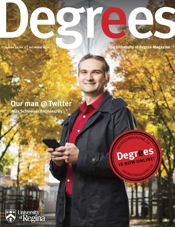


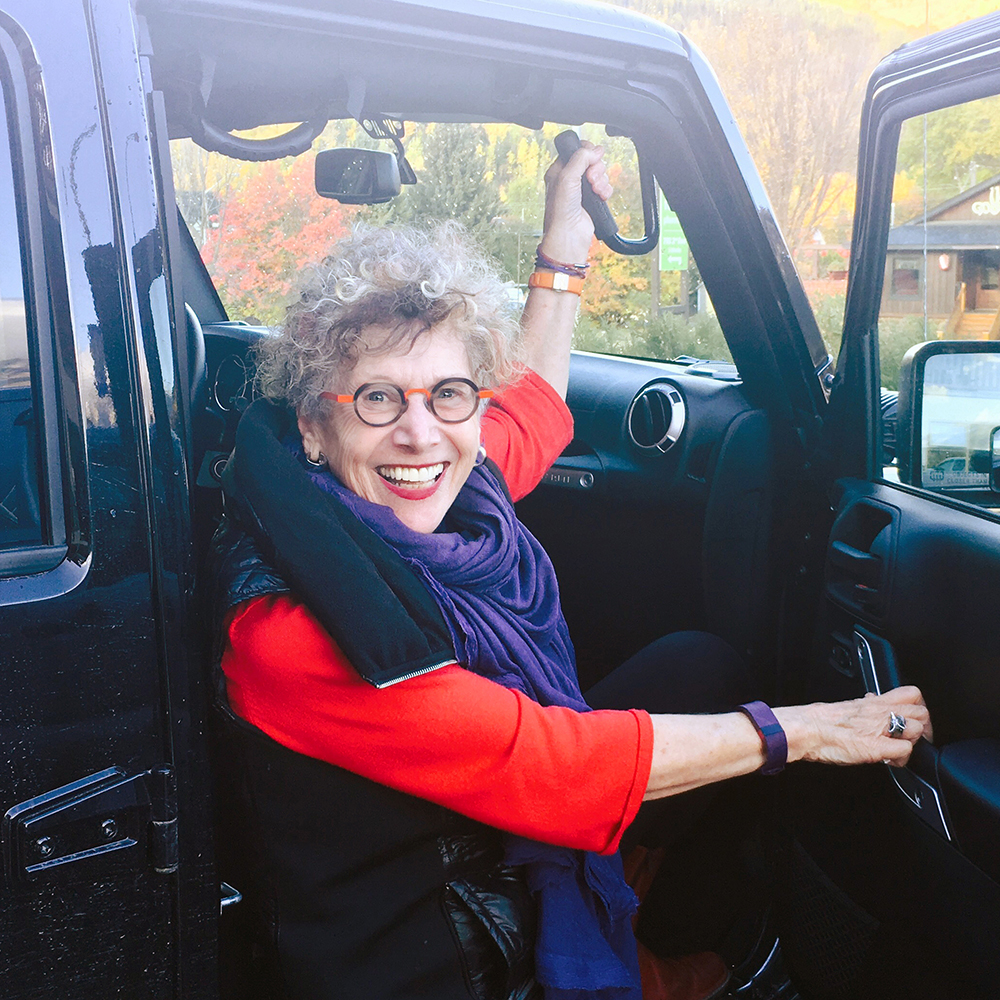 Lorna Crozier is an Officer of the Order of Canada, and has received five honorary doctorates, including one from the University of Regina in 2004. (Photo by Angie Abdou)
What is it about the land of my birth and upbringing that influences the sensibilities of a writer such as me? The plains that surround my hometown of Swift Current confound those who first encounter them. In all directions the grasslands stretch far and away like a desert. Shadows from the clouds swim over the wild grasses and heads of wheat. The rills and shallow coulees shape-shift as daylight declines. With the dry land, the spare rain, come no sounds of rushing water, no stands of trees shouting to the wind, though the wind is always there, a companion of loneliness, a keening that invades the imagination and leaves a solitary traveller speechless with wonder.
A stranger to this land complains there's nothing to see, nothing to hear. So many of my friends from the mountains or the coast tell me they drive for hours on the Trans-Canada through the Prairies, and they feel they've gone nowhere. If you're sensitive to this landscape, I reply, this nowhere is somewhere uncanny and true. Your ear and eye become subtly, exquisitely tuned.
Writers must, above everything else, develop the ability to listen, not only to other humans but also to the land itself, though its homilies can't be translated into any known tongue. Outside of the towns and cities in southwest Saskatchewan, when you're used to the noise of urban life, the silence you encounter seems impregnable. At first it could be mistaken for the muteness that arises out of emptiness. But it's not that. It's a quiet that demands attention. Something significant is about to be uttered, and silence has prepared a proper place for it. It is up to you to respond in kind.
Lorna Crozier is an Officer of the Order of Canada, and has received five honorary doctorates, including one from the University of Regina in 2004. (Photo by Angie Abdou)
What is it about the land of my birth and upbringing that influences the sensibilities of a writer such as me? The plains that surround my hometown of Swift Current confound those who first encounter them. In all directions the grasslands stretch far and away like a desert. Shadows from the clouds swim over the wild grasses and heads of wheat. The rills and shallow coulees shape-shift as daylight declines. With the dry land, the spare rain, come no sounds of rushing water, no stands of trees shouting to the wind, though the wind is always there, a companion of loneliness, a keening that invades the imagination and leaves a solitary traveller speechless with wonder.
A stranger to this land complains there's nothing to see, nothing to hear. So many of my friends from the mountains or the coast tell me they drive for hours on the Trans-Canada through the Prairies, and they feel they've gone nowhere. If you're sensitive to this landscape, I reply, this nowhere is somewhere uncanny and true. Your ear and eye become subtly, exquisitely tuned.
Writers must, above everything else, develop the ability to listen, not only to other humans but also to the land itself, though its homilies can't be translated into any known tongue. Outside of the towns and cities in southwest Saskatchewan, when you're used to the noise of urban life, the silence you encounter seems impregnable. At first it could be mistaken for the muteness that arises out of emptiness. But it's not that. It's a quiet that demands attention. Something significant is about to be uttered, and silence has prepared a proper place for it. It is up to you to respond in kind.
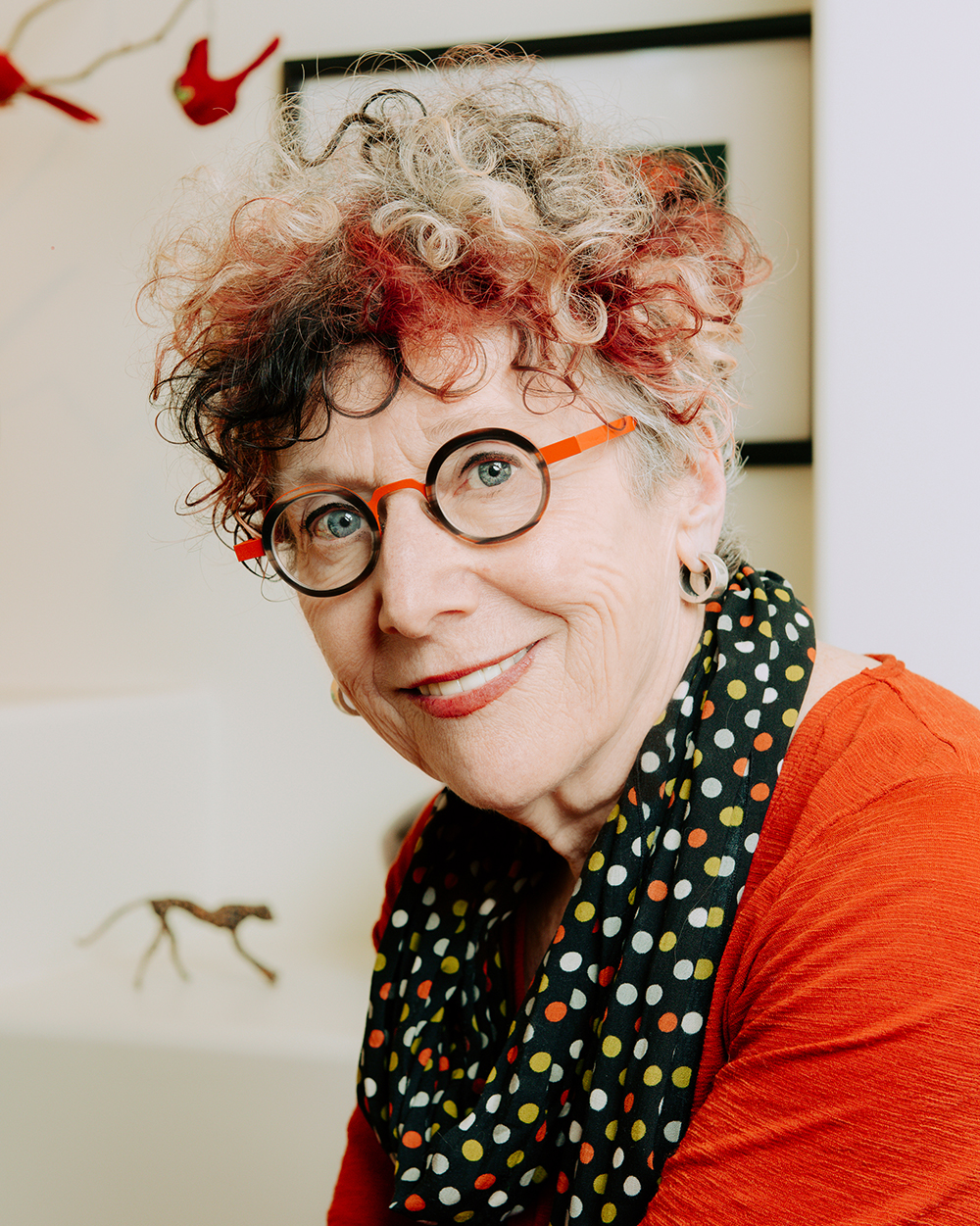 Crozier lives on Vancouver Island with writer Patrick Lane and two cats who love to garden. (Photo by Kamil Bialous)
A South African writer I met this past fall at a poetry festival in Hong Kong tells me of a word that means "the sky just after a swan has flown through." That scrap of blue looks different from what surrounds it: the swan's beauty, the energy of its being has left a vestige of its flight. This is the kind of thing a poet is looking for, a brilliant trace of what can't be seen. It is the poet's task to make the unseen visible with reticence and grace.
The Book of Genesis begins with God's first words: "Let there be light." Surely He said that in the middle of the grasslands, perhaps on a small rise smack in the middle of what would become Swift Current to the west and Moose Jaw to the east. His radiant invention, spoken into existence, rolled out of the darkness of his mouth onto a long, undulating stretch of land. No wonder after 40 years of writing, I return here in the lines of my poems. It was words that created the light. And the light that shone on every worldly thing claimed this place as home.
[post_title] => Drenched in light
[post_excerpt] => Poet Lorna Crozier reflects on the prairie landscape of her childhood and how it has shaped her writing.
[post_status] => publish
[comment_status] => open
[ping_status] => open
[post_password] =>
[post_name] => drenched-in-light
[to_ping] =>
[pinged] =>
[post_modified] => 2022-02-23 16:17:00
[post_modified_gmt] => 2022-02-23 22:17:00
[post_content_filtered] =>
[post_parent] => 0
[guid] => https://www.degreesmagazine.ca/?p=1272
[menu_order] => 0
[post_type] => post
[post_mime_type] =>
[comment_count] => 0
[filter] => raw
)
WP_Post Object
(
[ID] => 2114
[post_author] => 7
[post_date] => 2018-11-02 08:54:40
[post_date_gmt] => 2018-11-02 14:54:40
[post_content] =>
Crozier lives on Vancouver Island with writer Patrick Lane and two cats who love to garden. (Photo by Kamil Bialous)
A South African writer I met this past fall at a poetry festival in Hong Kong tells me of a word that means "the sky just after a swan has flown through." That scrap of blue looks different from what surrounds it: the swan's beauty, the energy of its being has left a vestige of its flight. This is the kind of thing a poet is looking for, a brilliant trace of what can't be seen. It is the poet's task to make the unseen visible with reticence and grace.
The Book of Genesis begins with God's first words: "Let there be light." Surely He said that in the middle of the grasslands, perhaps on a small rise smack in the middle of what would become Swift Current to the west and Moose Jaw to the east. His radiant invention, spoken into existence, rolled out of the darkness of his mouth onto a long, undulating stretch of land. No wonder after 40 years of writing, I return here in the lines of my poems. It was words that created the light. And the light that shone on every worldly thing claimed this place as home.
[post_title] => Drenched in light
[post_excerpt] => Poet Lorna Crozier reflects on the prairie landscape of her childhood and how it has shaped her writing.
[post_status] => publish
[comment_status] => open
[ping_status] => open
[post_password] =>
[post_name] => drenched-in-light
[to_ping] =>
[pinged] =>
[post_modified] => 2022-02-23 16:17:00
[post_modified_gmt] => 2022-02-23 22:17:00
[post_content_filtered] =>
[post_parent] => 0
[guid] => https://www.degreesmagazine.ca/?p=1272
[menu_order] => 0
[post_type] => post
[post_mime_type] =>
[comment_count] => 0
[filter] => raw
)
WP_Post Object
(
[ID] => 2114
[post_author] => 7
[post_date] => 2018-11-02 08:54:40
[post_date_gmt] => 2018-11-02 14:54:40
[post_content] => 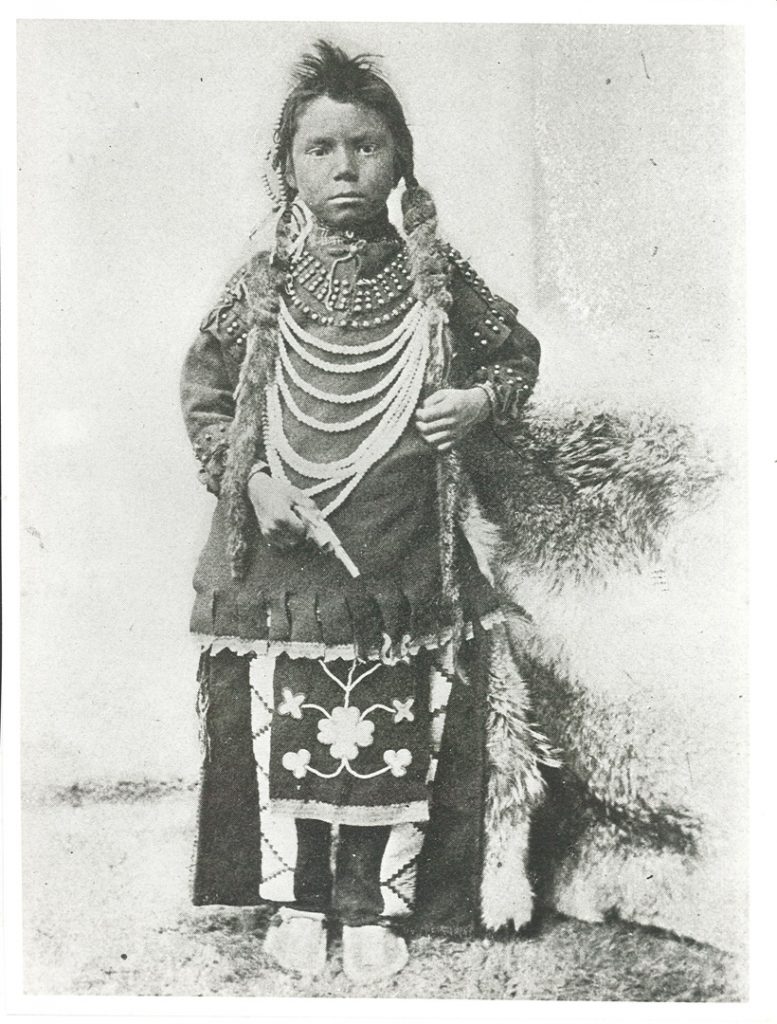 Thomas Moore circa 1897. (Photo courtesy of First Nations University of Canada
Thomas Moore circa 1897. (Photo courtesy of First Nations University of Canada
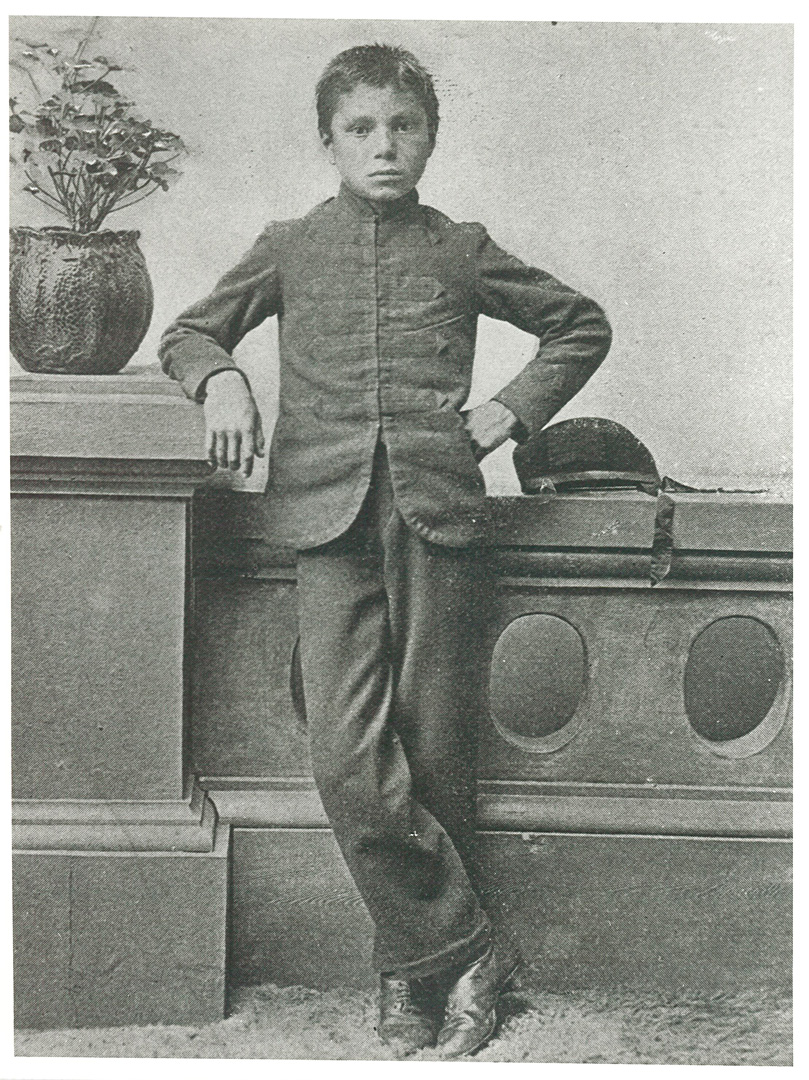 Thomas Moore after entrance in Regina Industrial School circa 1897. (Photo courtesy of First Nations University of Canada)
Thomas Moore after entrance in Regina Industrial School circa 1897. (Photo courtesy of First Nations University of Canada)
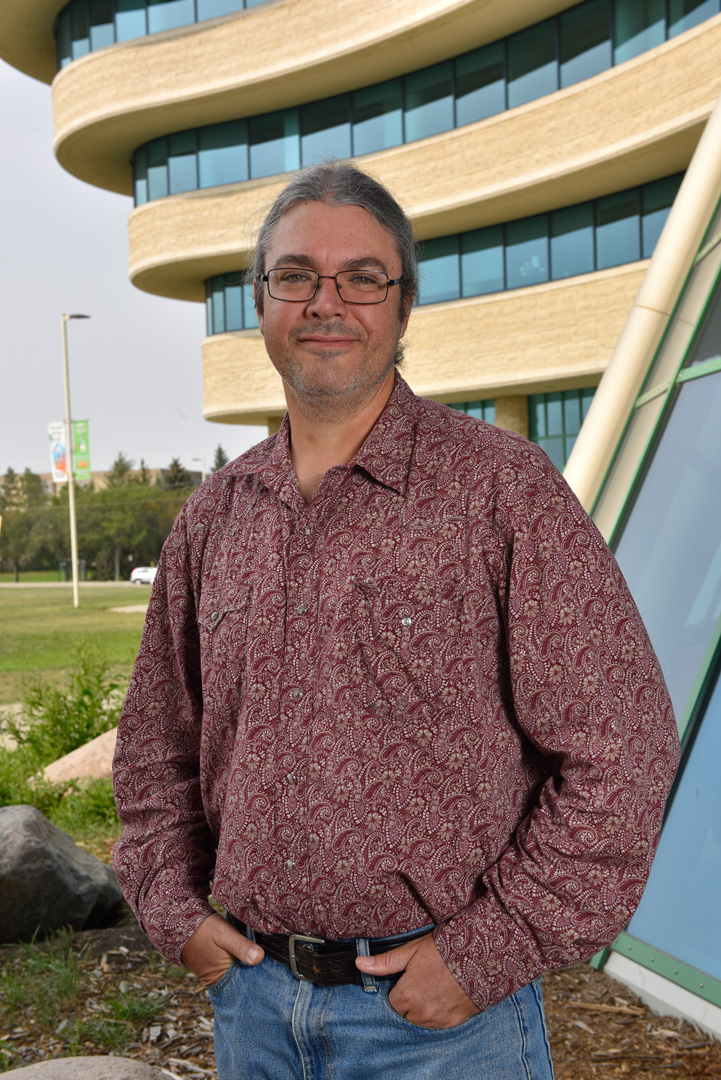 First Nations University of Canada Indigenous Languages, Arts and Cultures professor Andrew Miller. (Photo by Rae Graham)
First Nations University of Canada Indigenous Languages, Arts and Cultures professor Andrew Miller. (Photo by Rae Graham)
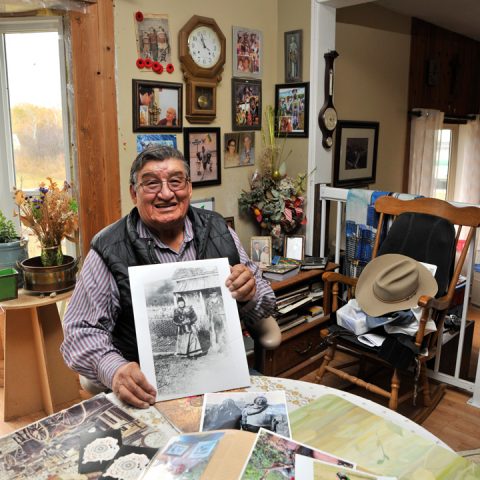 Wayne Goodwill is photographed with the photo he saw at Treaty 4 Days in Fort Qu’Appelle, Saskatchewan. Goodwill recognized the woman in the photo as his grandmother, Martha Taweyaka and her husband Louis Taweyaka. (Photo by Don Hall)
Wayne Goodwill is photographed with the photo he saw at Treaty 4 Days in Fort Qu’Appelle, Saskatchewan. Goodwill recognized the woman in the photo as his grandmother, Martha Taweyaka and her husband Louis Taweyaka. (Photo by Don Hall)
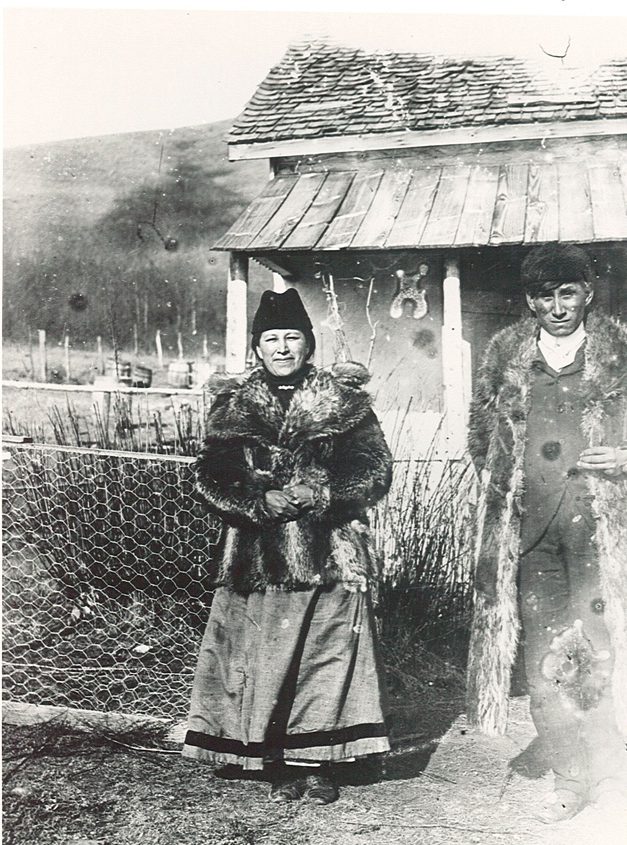 Photo from the First Nations University of Canada archive of Louis and Martha Taweyaka in front of A. Rooke's house near Fort Qu'Appelle. The couple were married in 1897. (Photo courtesy of First Nations University of Canada)
Photo from the First Nations University of Canada archive of Louis and Martha Taweyaka in front of A. Rooke's house near Fort Qu'Appelle. The couple were married in 1897. (Photo courtesy of First Nations University of Canada)
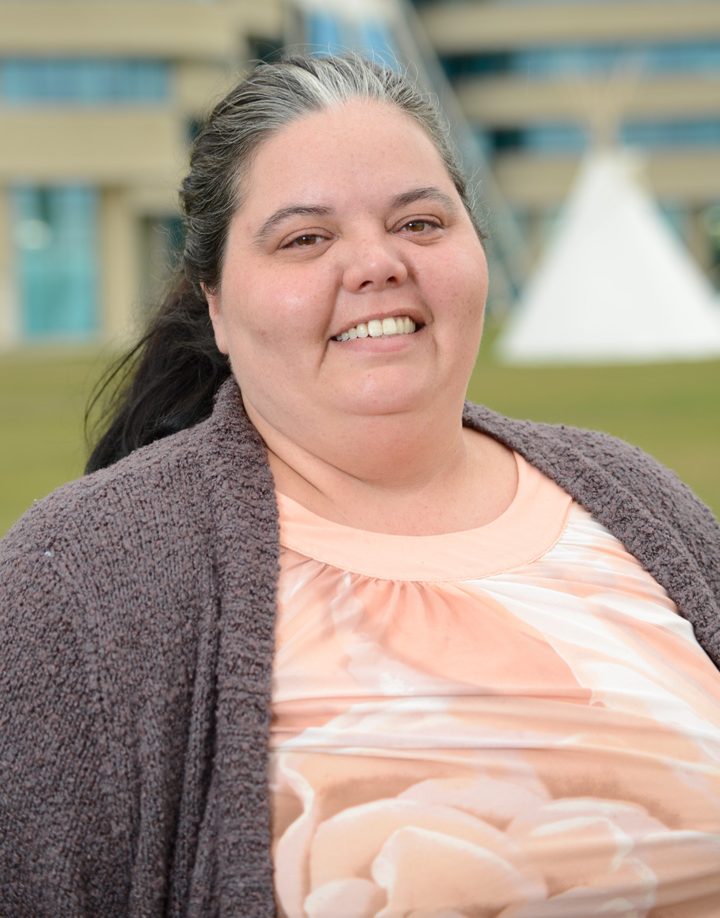 Carmen Miedema, a master’s student in archival studies at the University of Manitoba has a keen interest in the FNUC archive photo collection. Miedema is also an archivist for the National Centre for Truth and Reconciliation. (Photo by Trevor Hopkin)
Carmen Miedema, a master’s student in archival studies at the University of Manitoba has a keen interest in the FNUC archive photo collection. Miedema is also an archivist for the National Centre for Truth and Reconciliation. (Photo by Trevor Hopkin)